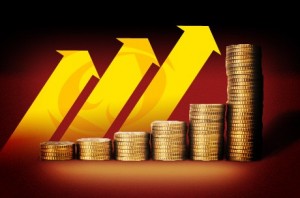
Expected Value
If you thoroughly read poker strategy books or our written poker articles on the website, you will repeatedly find statements that poor poker players can win in the short term, but will lose in the long term. The opposite rule applies to professionals and very good players. They may lose in the short term, but will usually win in the long term.
Why is that? It is because of a concept known as expected value (EV) [Video]. Expected value is your anticipated profit from the amount wagered. For example, let's say you bet with me to flip a coin. If it lands on heads, I give you 100Lt. If it lands on tails, you give me 1Lt. Should you theoretically agree to bet (considering the flip is fair and the probability of heads or tails is 50-50)?
Of course! There is a 50% chance of landing on heads, meaning you win 100Lt. So, your expected win is 50Lt (0.50 * 100Lt). If it lands on tails, you lose 1Lt. So, your expected loss is 0.50Lt (0.50 * 1Lt). Your expected profit is the expected win minus the expected loss. So, your expected profit is 49.50Lt.
Obviously, you won't win 49.50Lt. You will win 100Lt or lose 1Lt. However, you should view the bet as a “win” of 49.50Lt. Short-term gambling results are influenced by randomness, or in poker, a term often used is poker variance. However, in the long term, your results will closely reflect your expected value. If we flipped the coin a million times as in the example, your final profit would be very close to 49.5 million Lt.
So how is expected value applied in poker? The clearest example of expected value is the pot odds theory (also implied odds, reverse implied odds, etc.). The pot odds theory states that you should only make a draw when you have a positive expected value.
Other examples of expected value are demonstrated in more complex moves below.
Bluffing and calling bluffs depend on expected value. When you bluff, you should roughly calculate the probability of the bluff succeeding in your mind. This success probability should be compared to the expected value and should aim to be positive. For example, if the pot is $100 and I bluff by betting $50, I need the bluff to work 33% of the time (considering that in case of a call, I have a 0% chance of winning). This is because I need to win 1 out of 3 times to break even.
Expected value also helps to explain the differences between big mistakes and small mistakes. Big mistakes occur when a player makes a decision that has a very large negative expected value, while a small mistake is when a player misses a small expected value.
 If you plan to play a lot of poker, you should eventually know your expected value per hour of play. To do this, you will need to keep accurate records. You can do this using specialized poker tracking software, such as Holdem Manager or PokerTracker. After some time, you will be able to reasonably calculate your expected win or loss per hour of play (you should play at least 200 hours in the same place and limit to get a proper result).
If you plan to play a lot of poker, you should eventually know your expected value per hour of play. To do this, you will need to keep accurate records. You can do this using specialized poker tracking software, such as Holdem Manager or PokerTracker. After some time, you will be able to reasonably calculate your expected win or loss per hour of play (you should play at least 200 hours in the same place and limit to get a proper result).
Expected value is another reason why you should never play a game you can't afford. If you are afraid of losing, you will reluctantly play when you have a small advantage. In some hands, you will miss a lot of expected value, which will likely make you a losing player overall.





